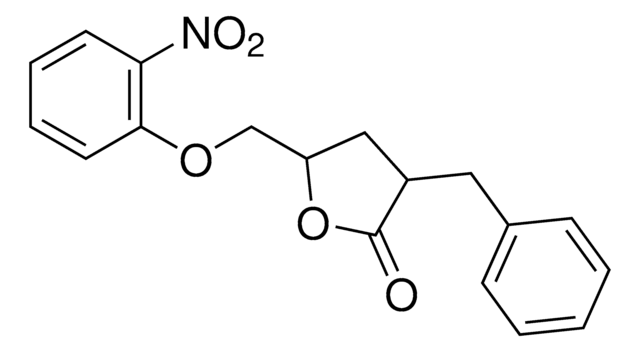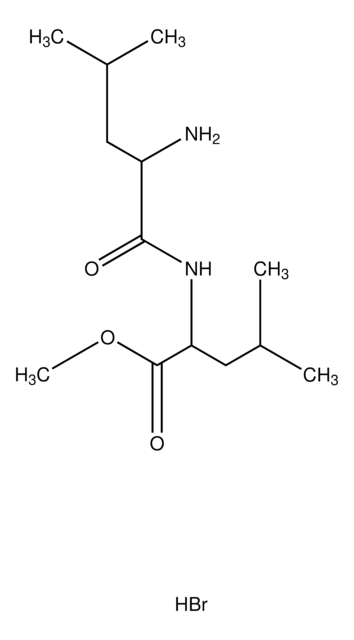SML0810
MHY1485
≥95% (HPLC)
Synonym(e):
4,6-Di-4-morpholinyl-N-(4-nitrophenyl)-1,3,5-triazin-2-amine
About This Item
Empfohlene Produkte
Assay
≥95% (HPLC)
Form
powder
Farbe
white to beige
Löslichkeit
DMSO: 2 mg/mL, clear (warmed)
Lagertemp.
2-8°C
InChI
1S/C17H21N7O4/c25-24(26)14-3-1-13(2-4-14)18-15-19-16(22-5-9-27-10-6-22)21-17(20-15)23-7-11-28-12-8-23/h1-4H,5-12H2,(H,18,19,20,21)
InChIKey
MSSXBKQZZINCRI-UHFFFAOYSA-N
Anwendung
- to study the effect of mammalian target of rapamycin mTOR signalling on in vitro O-GlcNAcylation
- to inhibit autophagy
- as a mTOR agonist to demonstrate that the O-linked N-acetylglucosamine transferase- RNA helicase p68 (OGT-DDX5) axis regulates colorectal cancer cell proliferation and metastasis
Biochem./physiol. Wirkung
Leistungsmerkmale und Vorteile
Lagerklassenschlüssel
11 - Combustible Solids
WGK
WGK 3
Flammpunkt (°F)
Not applicable
Flammpunkt (°C)
Not applicable
Analysenzertifikate (COA)
Suchen Sie nach Analysenzertifikate (COA), indem Sie die Lot-/Chargennummer des Produkts eingeben. Lot- und Chargennummern sind auf dem Produktetikett hinter den Wörtern ‘Lot’ oder ‘Batch’ (Lot oder Charge) zu finden.
Besitzen Sie dieses Produkt bereits?
In der Dokumentenbibliothek finden Sie die Dokumentation zu den Produkten, die Sie kürzlich erworben haben.
Kunden haben sich ebenfalls angesehen
Artikel
We offer many products related to PKB/Akt for your research needs.
Cell cycle phases (G1, S, G2, M) regulate cell growth, DNA replication, and division in proliferating cells.
Apoptosis regulation involves multiple pathways and molecules for cellular homeostasis.
Unser Team von Wissenschaftlern verfügt über Erfahrung in allen Forschungsbereichen einschließlich Life Science, Materialwissenschaften, chemischer Synthese, Chromatographie, Analytik und vielen mehr..
Setzen Sie sich mit dem technischen Dienst in Verbindung.














